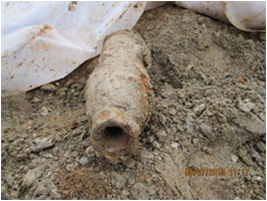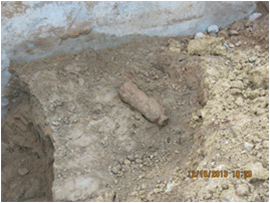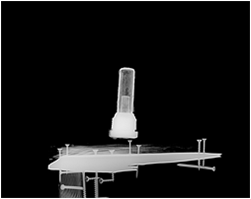WWI Experimental 75mm High Explosive Shells Adapted For Poison Gas
In World War I, experiment stations at Lakehurst, NJ, Edgewood Arsenal, MD, The American University, DC, and others attempted to develop new gas projectiles. Among them was the Livens Drum, a SCUBA tank-sized crude mortar shell, the Stokes Mortar, and adapted artillery shells.
For the American Expeditionary Force, the 75mm shell was the standard field artillery round. Adapting it for gas was quickly accomplished with the addition of a hex plug to fit the ogive hole already threaded for the Scoville powder train fuse.
The hex plug was fashioned like a pipe reducer. It had a steel tube 1 1/8 inch in diameter welded to the end of the hollow plug. The inner hole of the plug was also threaded to accept a smaller impact fuze. The bulk of the tube was filled with enough tetryl to split the shell allowing the toxic liquid to evaporate into the breathable air of the enemy. Most WWI gases (Mustard, Phosgene, etc.) were refrigerated into a liquid agent for shell filling. The liquid evaporated at normal temperature once exposed to the air and being heavier than air would settle into trenches, fox holes or bunkers.
A lead washer was put around the hex plug after the shell was filled with the liquid agent as a seal when the hex plug was screwed into the ogive. The fuze could then be screwed into the hex plug just before firing. I believe that tetryl was already packed into the burster tube.
These gas shells are sometimes found by relic hunters exploring US WWI stations and forts that were also used in the Civil War.











There are no comments for this entry.
[Add Comment]